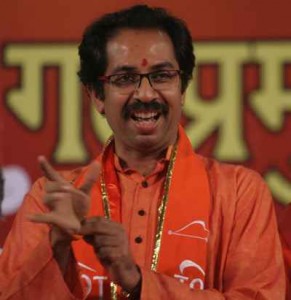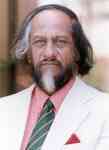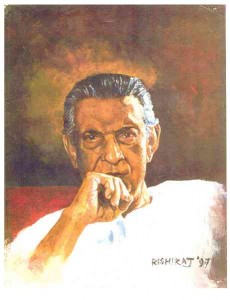Some are born great and some have greatness thrust upon them, goes the adage and Uddhav is a living testament to that. Till about 2002, little was known about Uddhav except that he liked photography and yes that he was the youngest son of the ‘remote control’ of one of the most vituperative Hindu leader. The bespectacled almost impish Uddhav preferred to do his bit, snap tigers in the wild, or shoot forts in Maharashtra from a helicopter. Uddhav, whose name means the brother of Krishna, was quiet happy to lead a non-descript life with his two sons. Since, he happened to be at the vortex of power, he could barely afford the privilege of a profession. So, he was content hosting his photo exhibitions now and then and living it out at his idyllic farm house in Karjat. Unlike his elder brothers, Jaidev and Binda, who were either spoilt by the allure of power or caught in a web of indulgences, Uddhav kept away from both politics and business. In a way, youngest Thackeray seemed to have inherited more from his mother Meena Thackeray, a warm and genile persona that shielded an iron will.
Uddhav, whose name means the brother of Krishna, was quiet happy to lead a non-descript life with his two sons. Since, he happened to be at the vortex of power, he could barely afford the privilege of a profession. So, he was content hosting his photo exhibitions now and then and living it out at his idyllic farm house in Karjat. Unlike his elder brothers, Jaidev and Binda, who were either spoilt by the allure of power or caught in a web of indulgences, Uddhav kept away from both politics and business. In a way, youngest Thackeray seemed to have inherited more from his mother Meena Thackeray, a warm and genile persona that shielded an iron will.
Yet, for all his desires to be away from the dust and grime of politics, he was destined for it. With the death of his brother Binda Thackeray in a car accident, his mother Meenatai in a cardiac arrest and relationship souring between Jaidev and senior Thackeray, his ageing father had no shoulder to lean on, except Uddhav’s. Though, there was indeed Uddhav’s cousin and Balasaheb’s nephew Raj, who had completely imbibed his uncle not only in the way he looked, but also the way he spoke, he thought and he reacted. Raj also had a keen business mind, and was not averse to using any means to achieve his ends. The Ramesh Kini murder case was an example, Raj was accused of threatening and subsequent murder of Ramesh Kini for a real estate deal. Raj over the years, under the aegis of Balasaheb had become the de-facto heir, whose anointment was just a matter of time. But destiny had other plans for him as well.

 has to ensure that the society succeeds as well. And hence, for that to happen companies need to start looking at some of these initiatives as part of their overall operating strategy, not something that you do external to the enterprise. Hence, it is essential to integrate the two.
has to ensure that the society succeeds as well. And hence, for that to happen companies need to start looking at some of these initiatives as part of their overall operating strategy, not something that you do external to the enterprise. Hence, it is essential to integrate the two. heart beat. Going by my own gait and girth, I for once would have been a more likely candidate for such an event in comparison to Ranjan. But then Ranjan is not the exception when it comes to a life snuffed out in the prime, in my own personal sphere I have come across numerous instances like Dewang & Sunil Mehta from Nasscom, Vivek Dayal from Mphasis, etc.
heart beat. Going by my own gait and girth, I for once would have been a more likely candidate for such an event in comparison to Ranjan. But then Ranjan is not the exception when it comes to a life snuffed out in the prime, in my own personal sphere I have come across numerous instances like Dewang & Sunil Mehta from Nasscom, Vivek Dayal from Mphasis, etc. 
 er’s repertoire, starting with Pather Panchali and if possible going on till Agantuk. Probably all his contemporaries and admirers like Renoir, Bergman, Bunuel, Fellini, Kurosawa must have arrived from their respective heavens, revisiting his masterpieces, discussing, dissecting and deliberating on them. Meanwhile, the birthday boy himself, would be sitting in a corner, away from the glare, dressed up in white dhoti-kurta and a shawl draped over his torso. Sitting cross-legged, a pipe hanging from his mouth sending out small small tufts of tobacco clouds quite like the steam engine in Pather Panchali that amused Apu and Durga. Satyajit Ray or Manikda as he was known within the film fraternity, must be observing all and sundry with intent full eyes, and probably thinking of what more embellishments could have been made to these movies or how many more he could have made, only if he had seen Bicycle Thieves a little earlier or the finances had flown in evenly through the years. Or just probably, he might be seeing those movies now not as a maker but as a viewer and enjoying them as thoroughly as we all do.
er’s repertoire, starting with Pather Panchali and if possible going on till Agantuk. Probably all his contemporaries and admirers like Renoir, Bergman, Bunuel, Fellini, Kurosawa must have arrived from their respective heavens, revisiting his masterpieces, discussing, dissecting and deliberating on them. Meanwhile, the birthday boy himself, would be sitting in a corner, away from the glare, dressed up in white dhoti-kurta and a shawl draped over his torso. Sitting cross-legged, a pipe hanging from his mouth sending out small small tufts of tobacco clouds quite like the steam engine in Pather Panchali that amused Apu and Durga. Satyajit Ray or Manikda as he was known within the film fraternity, must be observing all and sundry with intent full eyes, and probably thinking of what more embellishments could have been made to these movies or how many more he could have made, only if he had seen Bicycle Thieves a little earlier or the finances had flown in evenly through the years. Or just probably, he might be seeing those movies now not as a maker but as a viewer and enjoying them as thoroughly as we all do.